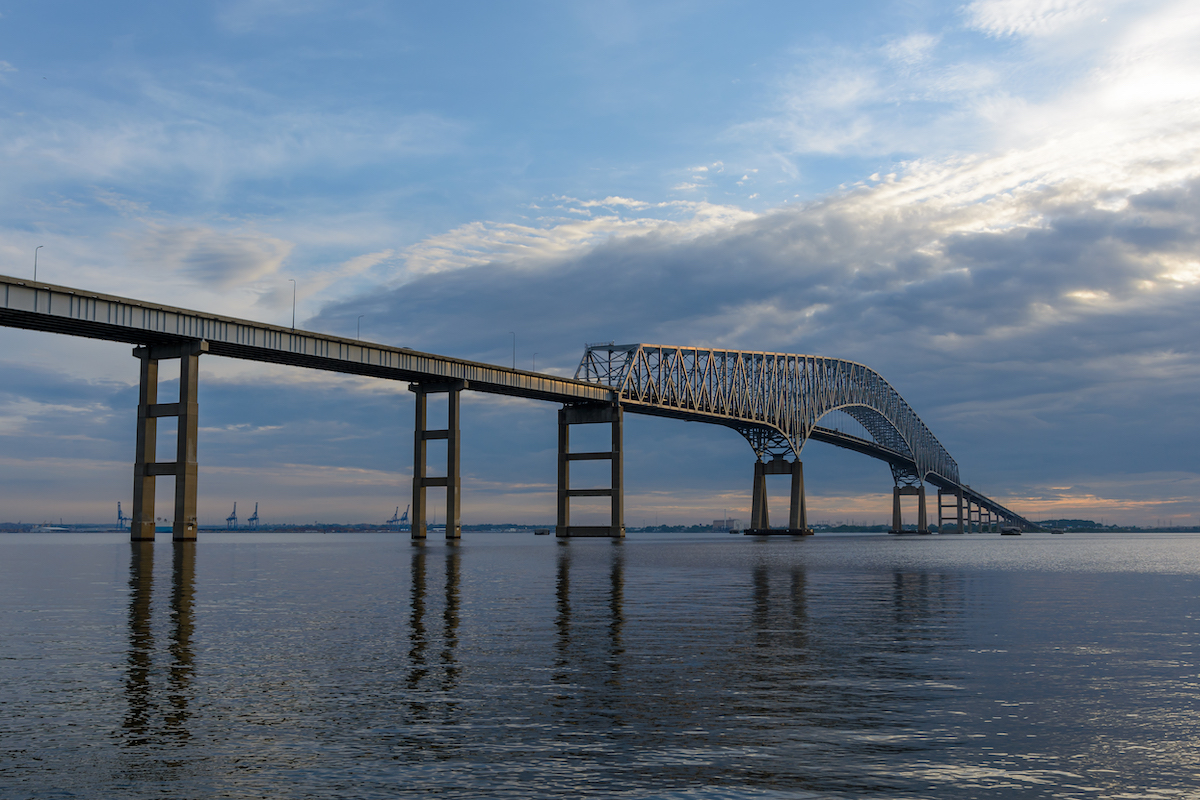Baltimore bridge: What we know so far about the collapse
As of Tuesday morning, six construction workers were still missing.

*Editors Note: This is a developing story and content may be updated or changed as new information is released.
The world woke up Tuesday to news of one of the worst infrastructure disasters in recent memory. Information about the collapse of the Francis Scott Key Bridge in Baltimore, Maryland is changing rapidly but there is what we know so far.
What happened to the bridge
Dali, a container ship chartered by global shipping giant Maersk and flying under the flag of Singapore, appeared to lose power and drift into the Francis Scott Key Bridge early Tuesday morning. Shipping data shows the vessel is 300 metres long and was bound for Colombo, Sri Lanka. The incident is being investigated by the National Transportation Safety Board. Video shows the ship colliding with one of the bridge’s support columns, causing it to collapse. According to local reports, the ship issued a “mayday” shortly before the collision. Dali was also involved in a collision in 2016 in Antwerp, Belgium, according to online shipping records. Since it was built in 2015, the ship has undergone 27 inspections.
Casualty numbers remain unclear
The exact casualty numbers are not yet known but officials are calling it a mass casualty event. Officials say a team of eight people were repairing potholes on the bridge at the time of the incident. As of Tuesday morning, two had been rescued and six were still missing. Officials added that sonar has detected vehicles in the water. All of the personnel on the vessel are accounted for, with no reported injuries.
Local and national response
Maryland Governor Wes Moore stated that his office is in close communication with U.S. Transportation Secretary Pete Buttigieg, Baltimore Mayor Brandon Scott, Baltimore County Executive Johnny Olszewski, and the Baltimore Fire Department as emergency personnel are on the scene following the collapse of the Francis Scott Key Bridge.
“I have declared a State of Emergency here in Maryland and we are working with an interagency team to quickly deploy federal resources from the Biden Administration,” said Moore. “We are thankful for the brave men and women who are carrying out efforts to rescue those involved and pray for everyone’s safety.”
President Joe Biden told reporters that he intends for the federal government to pay for the entire replacement of the bridge.
The Port of Baltimore announced that vessel traffic into and out of the Port of Baltimore is suspended until further notice.
“This does not mean the Port of Baltimore is closed,” officials said. “Trucks are being processed within our marine terminals. At this time we do not know how long vessel traffic will be suspended. As soon as that is determined we will provide an update. Until then please keep those involved in your prayers.”
Aging infrastructure
According to the latest Infrastructure Report Card that is issued every four years in the U.S. by the American Society of Civil Engineers, the state of Maryland’s bridges is improving as the number of poor bridges in the state continues to decline.
Approximately 5% of Maryland’s bridges were listed as “poor” condition, compared to the national average of 8.4%. However, Maryland bridge owners face growing challenges associated with an aging bridge stock. On average, Maryland bridges are 48 years old, which means they are approaching the end of their 50-year lifespan. The Francis Scott Key Bridge was 47 years old. Approximately 25% of bridges in Maryland are over 60 years old.
History of the Francis Scott Key Bridge
Construction of the steel arch-shaped continuous through truss bridge began in 1972 to alleviate traffic and maintenance concerns regarding the Baltimore Harbor Tunnel. It opened in March 1977 as the final link in I-695 Baltimore Beltway, spanning the Patapsco River at the harbor entrance. Named after Francis Scott Key, the author of “The Star-Spangled Banner,” the bridge was seen as a significant engineering feat, being one of the longest continuous truss bridges in the United States. It is part of Maryland Route 695 and carries an estimated 11.5 million vehicles annually.
Impact on the Port of Baltimore
The Port of Baltimore not only boasts one of the major cargo hubs in the U.S. but also hosts a cruise terminal servicing Carnival Cruise Lines and Royal Caribbean, offering year-round cruises. In fiscal year 2016, the cruise terminal saw off 440,000 passengers, ranking it second in the Mid-Atlantic and 11th in the U.S. for cruise passenger volume. However, the terminal’s capacity faces constraints due to limitations in accommodating multiple vessel calls per day and impending air draft restrictions at the Francis Scott Key Bridge (I-695).
According to the state’s Infrastructure Report Card, as both cargo and cruise ships continue to increase in size, the air draft restrictions at the Chesapeake Bay and Francis Scott Key Bridges will pose significant challenges. Engineers noted in 2020 that ships taller than 185 feet risk safety concerns passing under the bridges to and from the Port of Baltimore, with some of the largest vessels nearing an air draft of 230 feet.

